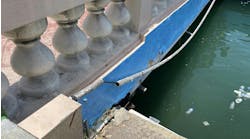In the November 2006 issue, my viewpoint and our cover story, “AFCIs on the Brink of a Home Invasion,” focused on a Code change proposal to expand the use of AFCIs for all 120V, single-phase, 15A and 20A branch circuits in dwelling units by Jan. 1, 2008. At the end of both pieces, we asked for your thoughts on the subject. I'm happy to say that many of you took us up on our offer.
Although the proposal isn't the first mention of AFCIs in the Code, it might be the most controversial. As you'll see from the comments below, none of the responses are in agreement with this proposed change — and many raise additional questions on application and installation concerns.
-
UL requirements now limit 125A panels to 12/24, which makes sense. So, if all your 15A and 20A circuits are full-size breakers, you will have to put in a sub-panel — or new panels will have to be designed to only accept a certain amount of non-AFCI breakers to power appliances but allow enough spaces to do a proper installation.
-
As an inspector, I hear from clients that these devices trip regularly when an appliance, such as a vacuum cleaner, is connected to them. When testing the devices in new construction, they often trip whenever I insert a receptacle tester into them.
-
The efforts of the NFPA are commendable in regard to AFCI protection; however, they need to make sure the technology is proven before it becomes mandatory. Therefore, the next Code cycle may be too soon for implementation of such an industry-changing requirement.
-
Has anyone ever qualified or sorted the personal injury and property loss statistics so we can determine how many fires are actually caused by the properly installed, fixed wiring in new homes? I am skeptical that the requirement for AFCI protection will reduce residential fire losses because I feel most fires occur in homes with older, outdated, overloaded, or improperly modified electrical systems.
-
This is a gold mine for residential electrical contractors. I'm not about to forego my margins on a device that will have more call backs and more explanation of the technology to customers.
-
Where does it end? At what point do sprinkler systems become required for all new residential construction?
-
It's not just the cost of the AFCIs, but also the call back expense for the contractor, the cost of more wire usage, and the cost of labor to install more home runs because you can't share the neutral of a 12/3 or 14/3 wire. I am against this proposal 110%!
-
AFCIs don't save lives. Smoke alarms save lives. AFCIs save property damage. I think the ones that benefit from less property damage are the insurance companies, and they are the ones that are behind the push for more AFCIs.
-
I have no doubt that the Code change requiring AFCI installation in residential bedrooms has resulted in fewer fatalities. However, requiring AFCIs on all residential circuits is masking the real causes of these fires. I believe the problem lies in the poor-quality electrical devices on the market, such as inexpensive extension cords and multi-outlet “cube” devices obtained at dollar stores.
-
I view the AFCI the same way I view air bags in cars and trigger locks on firearms — an expensive, wasteful, diversionary, and unnecessary form of duct tape to improperly address a problem.
Based on these comments, which only represent a small sample of the feedback, it appears to me we need to write a follow-up story on this topic. Stay tuned!


